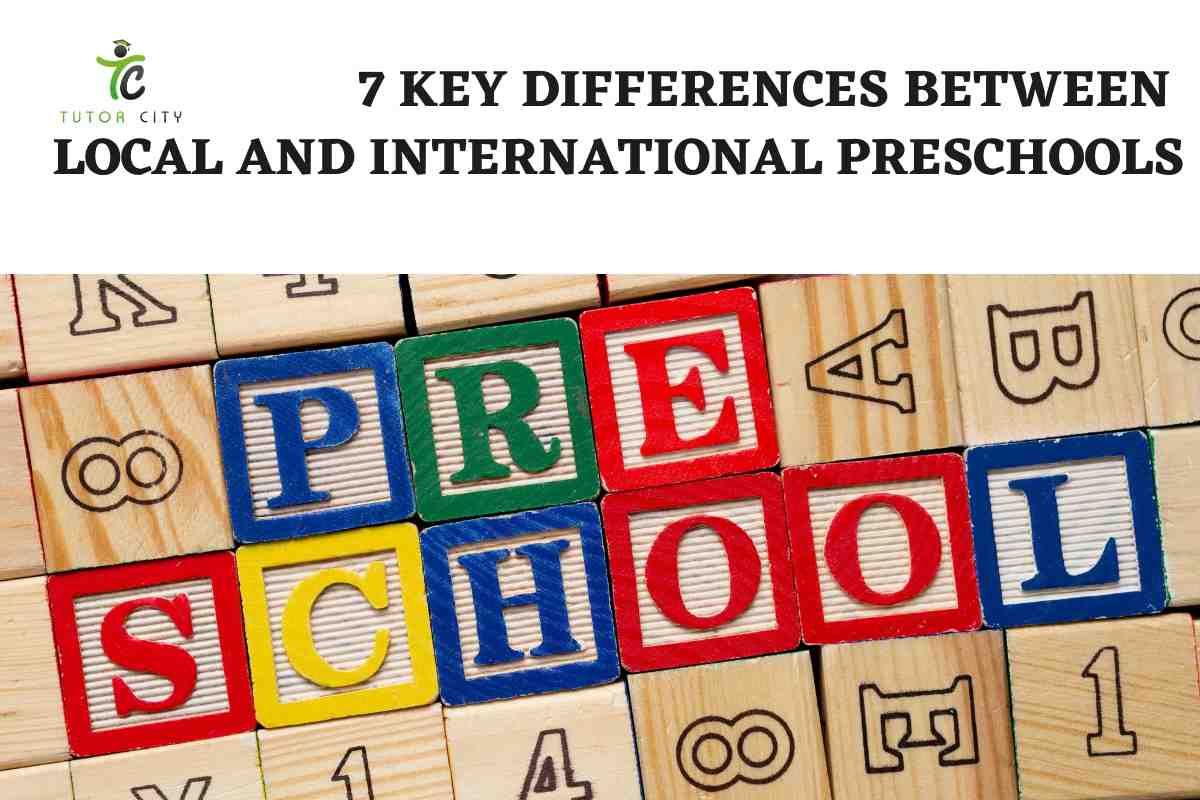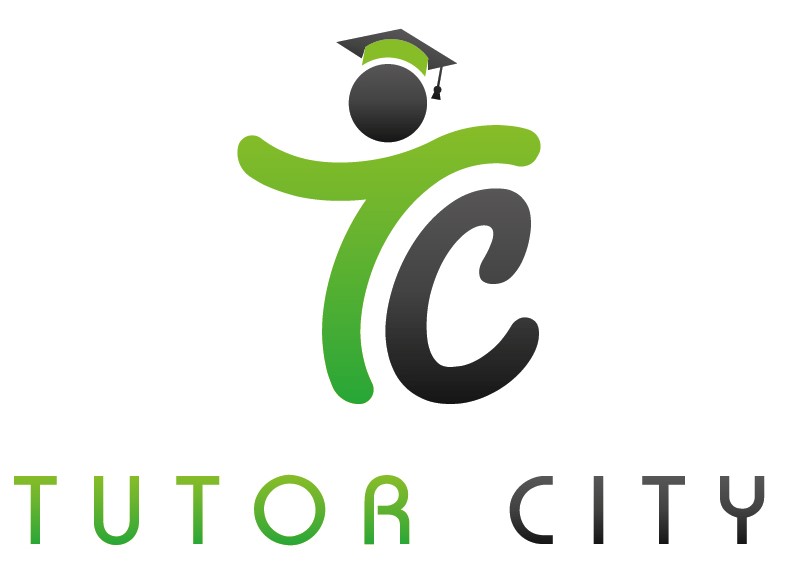
- Published by: Tutor City
- December 22, 2020
- Education
7 Key Differences Between Local And International Preschools
Today in Singapore there is a large number of preschools that offer high-quality education to their students so for many Singaporean parents picking the right preschool for their child can be a difficult choice.
Preschool is one of the first educational establishments your child will be enrolled in and it is of the utmost importance. The right preschool can give your child all the necessary tools they will need to successfully tackle the objectives in primary school.
One of the major decisions Singaporean parents have to make is whether to enroll their child into a local or international preschool. Of course, both of these types of schools have their advantages and disadvantages and regardless of the type you choose, you can rest assured that both of these educational establishments will try to give the best education possible to your child.
However, there are still some key differences between local and international preschools you need to take into consideration in order to choose the school that fits your child’s needs best.
So let’s have a look at some of the key differences and characteristics which will help you make an informed decision.
Do you have any specific criteria?
First and foremost, you have to ask yourself an important question.
Is there anything specific you require from your child’s preschool?
Some parents have a distinct and non-negotiable preference they would like the school to satisfy so if you are one of those parents your set of criteria will help you narrow down your choices. For example, for some parents, the most important thing is the location and the amount of time it takes to commute to school and back home.
Others may be searching for a preschool that has a great outdoor space that will encourage their children to spend more time outside, away from electronic devices.
And, last but not least, some parents want their preschool to be relatively small (in terms of the number of students) so that their child gets more attention and better supervision from the teacher. If you haven’t yet come up with a specific criterion that’s absolutely fine.
Hopefully, this article will help you make up your mind.
1. What kind of food do local and international preschools serve?
Children are notoriously picky eaters and most of the time it is quite difficult to get them to eat whatever you want them to eat (especially if you are offering them something healthy). The majority of local preschools offer a set menu. They do not alter this menu even if the students are not happy with it. To put it simply, you get what you get; take it, or leave it. The quality and the flavor of the food depends on individual preschools however food from local preschools has a reputation for being a bit bland and quite simple.
International schools however have a different approach to your child’s diet. International schools take into consideration the dietary needs of their students, their likes and dislikes, and, of course, the most important factor of all, their allergies. Several international schools even offer tasting sessions where children as well as their parents can taste the food from the school's cafeteria.
2. How different is the approach to learning?
Every human being is unique and each child learns concepts and words differently so in an ideal world the preschools would adapt to their students' learning style and their preferences. But alas, this is not possible in most cases.
Getting used to the academic curriculum in primary school is the main focus of classes in local preschools. The learning approach in local preschools focuses on preparing your child for the academic subjects they will have to tackle in their primary school.
In the beginning, it may seem complicated and, in some cases, children struggle a bit; however they do eventually get used to it and hone their reading and writing skills.
By comparison learning approach in international preschools mainly focuses on helping students speak faster and better. International preschools focus on developing students' language skills and they also ensure that their students have fun while doing it.
The international preschools’ curriculum emphasizes self-learning and creativity. This may sound appealing, however, the downside is that your child may not be able to read and write as fast as their counterparts from local preschools. However, you can mitigate this by engaging private english tutors to give your child additional support when needed.
3. How much does it cost?
You have probably guessed already that local and international preschools require different tuition fees. This fact makes or breaks the deal for many parents.
International preschools will cost you more even if you have an educational subsidy. On the other hand, local preschools are relatively more affordable and, in addition, they offer more subsidies. With that being said, if you plan to enroll your child into a local preschool that is rather popular it may be considerably more expensive compared to your average local preschool.
4. What is the teacher-to-student ratio?
Teachers aren’t just there to supervise your children and make sure that they don’t hurt themselves. They also play an important role in guiding your child through their preschool years and giving them advice and instruction. So, logically, the fewer the number of students, the more attention teacher will be able to give to your child. Since the class sizes are smaller in international preschools enrolling your child in such a school will ensure that they have access to their teacher more frequently than their local preschool counterparts.
By contrast, local preschools usually have a considerably larger student population (despite the fact that the number of students is capped according to MSF regulation). So teachers are not able to spend a lot of time tending to one individual student's needs.
5. Location is another important factor.
The location of the preschool is one of the most important factors you need to take into consideration since you will have to commute to school on a daily basis. In this category, local preschools have the upper hand since they are dotted everywhere around the city serving families who live in the vicinity.
By comparison, international preschools are primarily located in the center of the city due to the fact that these areas are heavily populated with ex-pat communities.
If the journey time is not a deterrent for you then by all means go ahead and enroll your child in an international preschool.
However, take into consideration that children at this tender age get tired very easily so it may not be a good idea to make them commute four hours on a daily basis. A long commute might make them irritable.
6. What is the ambience like?
This is a criterion that at first glance may not seem as important as all the others but trust me it is!
It is essential for your child to be surrounded by a welcoming environment that will give them the opportunity to relax when they need it.
When it comes to the atmosphere within a classroom, local preschools tend to be rather similar. As for the activities, children at local preschools start with worksheets regardless of how familiar they are with the subject.
Take into consideration that if the activities at preschool are not spaced out properly this may cause your child to feel overwhelmed and they may not be able to fully grasp what is being taught. On the other hand, international preschools try to create an inviting environment.
The walls in international preschools are often adorned with artwork and the children are encouraged to explore their environment. In terms of space international preschools tend to be larger than local ones. This space combined with the reduced number of students is a significant advantage.
7. Do they teach foreign languages?
In the 21st-century it is essential for students to be fluent in two or more languages to be successful in life. Both local and international preschools recognize this necessity and so both of them offer language courses to their students.
However, if you have a particular language in mind you would like your child to master then you will need to do some research and choose the appropriate school. If you want the focus of language education to be on the mother tongue (Chinese, Tamil or Malay) then you might want to enroll your child in the local preschool.
On the other hand, if you want your child to be proficient in English, then an international preschool is the best choice for you. International preschools have a large number of foreign students. So due to the diversity in their population, English is adopted as the common language. If your child is enrolled in such a school they will have no other choice but to speak English with their classmates.
In addition, some international preschools offer language courses for your child to try out other languages.
To conclude, choosing the right preschool is more important than one might think; so do not leave this decision until the last minute. The sooner you start doing your research the better it will be for your child in the long run.
Read also:
34 Preschools and kindergartens Reviewed
Listing of Spark-Certified Preschools






